IJCRR - 2(6), June, 2010
Pages: 08-12
Print Article
Download XML Download PDF
COMMUNICATION STRATAGEM AND ITS IMPORTANCE IN HEALTH CARE SECTOR: A STUDY
Author: Aarti Bagdi
Category: Healthcare
Abstract:This study reflects the importance of the communication strategy in Healthcare sector. The business of pharmaceutical industry is totally dependent upon the communication strategy opted by the sales people in marketing. Healthy communication between a Medical representative and the Health professional (doctor/ nurse/ pharmacist) helps to build a strong foundation for the business growth. Besides that, some secondary factors also which play a significant role to lead the product demand in sight of doctor. Thus, a question arises do the “trained” sales representative are enough to carry on the mrunning horse of an organization? What are the factors which a doctor think should be fulfilled by the Medical representative?
Full Text:
Introduction:
Medical representatives (MRs) are the input bond between pharmaceutical companies and health professionals. There work involves the awareness and use of company's medical product. The hierarchy level is as follows:
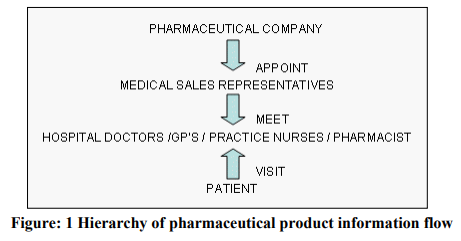
"Getting trained in a closed room, and reaching the sales target outside that closed system" is totally an opposite state of affairs. Candidates, who generate innovative way of approaching the sales opportunities, actually win the race. There is no strict blueprint to immediately hike the demand of the product in the market, but a hit and trial rule sometimes works here. The better you hit the target, the healthier you represent your product in front of doctor, and the positive the chances are of prescribing that product by the doctor. An experienced representative knows the work pattern, territory, and potential clients from where he/she can grab the prospective business. But, the key to success behind the whole process is the "communication" between the sales people and the health professionals.
Objective of the study:
- To emphasize on the importance of communication in the healthcare sector. Research Methodology
- :An interview was taken to extract data from doctors of the govt. hospitals.
- The Sample size used for the study was 30 doctors of 10 Govt. hospitals central Delhi, New Delhi.
- The parameters used for study were : communication practice, pronunciation, voice modulation, consistency and number of meetings done by MR.
Analysis:
The statistics in relation to the analysis done in context with govt. hospitals of New Delhi:-
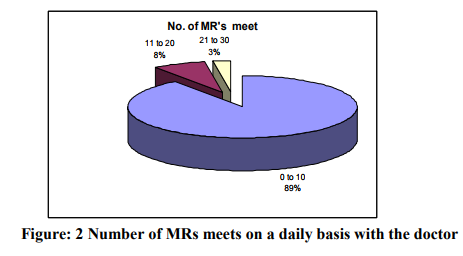
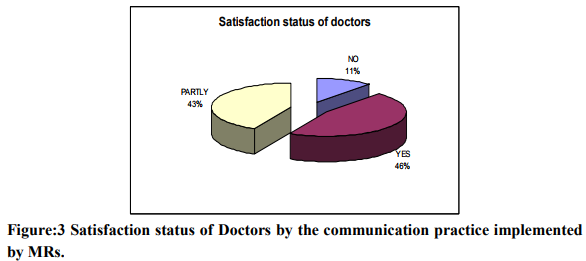
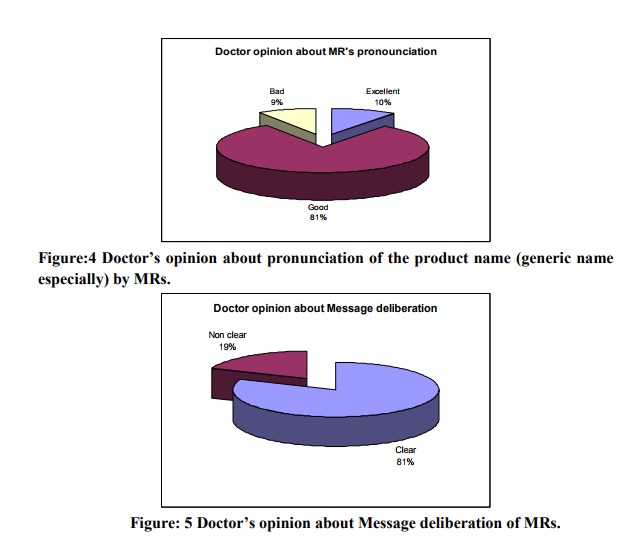
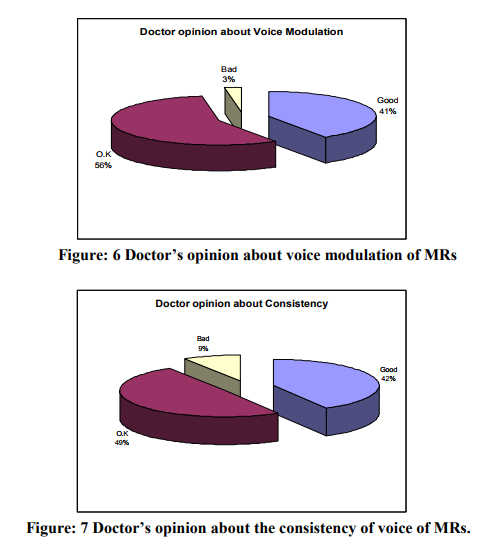
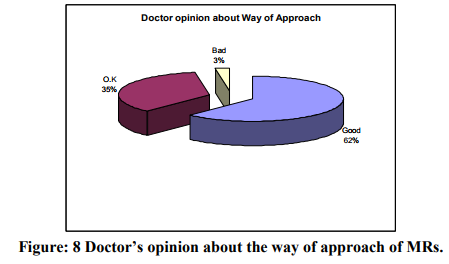
Therefore on the basis of the above figures, there are some suggestions listed below to overcome this ambiguity.
Suggestions: How MRs should communicate?
? Differentiate between formal and informal communication.
? Categorize the nature of health professional before communicating with them.
? An "appealing personality" with "good command on language", is half of the work done.
? Voice clarity and confidence is essential while detailing a product.
? Body language speaks before the mouth speaks.
? Understand the gestures of the professionals in response to your detailing.
? "Survival of the fittest", at last the success will be with the one who make continuous efforts in competition.
Conclusion:
The graphs & figures mentioned here are reflecting the void faced by MRs in relation to communication in healthcare industry. It is a subject of concern that the formal and informal communication, both plays an important role right from the beginning till the end of the business flow. "Right approach at the Right time" is the hymn which leads to success. Pharmaceutical companies also, should contribute to overcome this loophole of "weak communication" during their training sessions of Medical Representatives.
References:
1. The Indian Medical Council Act 1956.Universal Law publishing Co. Pvt. Ltd. 2003, accessed on 26th March 2010.
2. Medical sales representative: A Description,www.prospects.ac.uk/lin ks/MedExec/ accessed on 9th April 2010.
3. Unethical relationship between authors and drug companies, accessed on 20th April 2010.
4. Marketing communications in the Pharmaceutical Industry by Peter Holden accessed on 1st May 2010.
|






 This work is licensed under a Creative Commons Attribution-NonCommercial 4.0 International License
This work is licensed under a Creative Commons Attribution-NonCommercial 4.0 International License